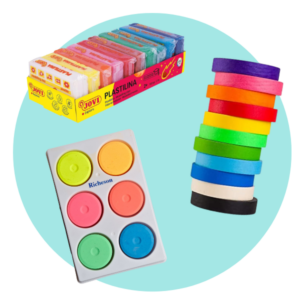Last weekend, I helped my dad clean out his garage — a project we’d been threatening to tackle since roughly 2009. Between the paint cans from the Clinton administration and boxes labeled simply “MISC,” I realized we weren’t just sorting junk. We were excavating layers of working-class life, each item telling its own story about making do, holding on, and the peculiar optimism of saving things “just in case.”
The American garage has become an accidental museum of class identity. What we keep, how we organize it (or don’t), and what we can’t bring ourselves to toss reveals more about economic reality than any income survey ever could.
1. The broken lawnmower that’s “an easy fix”
Tucked in the corner sits a mower that hasn’t started since 2012. But throwing it away feels like surrender. Working-class garages shelter these mechanical patients — machines that embody both practical knowledge and stubborn hope.
Growing up, I watched my uncle resurrect everything from washing machines to motorcycles with nothing but determination and a socket set. That dead mower represents potential, the conviction that with the right Saturday and a YouTube tutorial, anything can be saved. More than that, it’s a worldview: that skill and effort can triumph over the disposable culture that wealthier folks never question.
2. Paint cans from every room ever painted
Open any working-class garage door and witness the paint can graveyard. Barely Beige from the living room refresh. Seafoam Surprise from the bathroom year. Each can holds maybe two inches of separated liquid, saved for touch-ups that never come.
These cans map a history of home improvement as aspiration. Every color marks a moment when the family scraped together enough to make something look new. They’re monuments to the exhausting work of maintaining dignity on a budget. My mom still guards the can from my childhood bedroom — “Cosmic Blue,” because eight-year-old me insisted it looked like space.
3. The good cooler (and three broken ones)
One premium cooler reigns supreme — maybe a YETI knockoff or that ancient Coleman that actually holds ice. Around it cluster the fallen: cracked Igloos, styrofoam boxes from mail-order meats, that promotional soft-sided thing from somebody’s work picnic.
Coolers embody leisure as luxury. They promise beach days, camping trips, reunions that require serious ice retention. The good one gets treated like royalty while its broken cousins become storage bins for extension cords. We keep them all because you never know when you’ll need backup cooling, and tossing them feels like abandoning the dream of those bigger gatherings, those longer adventures.
4. Scrap wood that’s “perfectly good”
Every 2×4 cutoff, plywood piece bigger than a placemat, and length of old molding gets saved. Call it resource management inherited from generations who knew materials cost money.
My dad’s wood pile has fixed wobbly tables, patched fences, and built countless science fair projects. Each piece holds possibility: tomorrow’s shelf, next week’s repair, the emergency patch you’ll need at the worst possible moment. In working-class logic, nothing becomes waste until absolutely necessary. That pile of lumber? It’s basically a savings account denominated in avoided Home Depot runs.
5. Exercise equipment from hopeful Januarys
The ab roller. Rusty dumbbells. That resistance band system ordered at 2 AM. Garages become graveyards for fitness dreams, each piece evidence of trying to achieve health without membership fees.
Here’s what critics miss: keeping this stuff isn’t delusion. When you’re pulling doubles, when your back aches from real work, that dusty treadmill represents a future with time and energy for self-care. Every January, my dad dusts off those dumbbells, does three workouts, then carefully returns them to their spot. The equipment stays because throwing it out means accepting that easier days might not come.
6. Holiday decorations in disintegrating boxes
Those cartons marked “XMAS” in faded Sharpie hold more than tinsel. They contain the weight of maintaining joy despite financial pressure. The artificial tree missing half its branches, strings of lights with dead bulbs, ornaments made by kids now having kids of their own.
Working families rarely refresh decorations annually. So these boxes become memory archaeology, each item a small rebellion against economic limits. That angel tree-topper might need annual duct tape surgery, but she’s crowned every Christmas since 1994. In our house, suggesting replacement feels like betrayal.
7. Tools inherited from someone who knew how to use them
Almost always there’s a toolbox that belonged to dad’s dad, mom’s father, or that uncle who could fix anything. Manual drills, mysterious wrenches, saws that haven’t been sharp since Reagan. But this collection stays sacred.
My grandfather’s hammer lives in my garage now, its handle worn smooth by decades of actual work. These tools carry DNA — not biological, but the inherited knowledge of people who fixed rather than replaced. They’re physical links to generations who understood that skill could substitute for money. Even unused, they radiate competence we hope might transfer through proximity.
8. Car parts for vehicles long gone
An alternator for the ’98 Camry. Brake pads for the truck sold in 2018. A mystery air filter that definitely fits something. These orphaned parts map the complex relationship between working families and transportation.
When your car is your lifeline, every spare part becomes insurance against catastrophe. Even after the vehicle’s gone, good parts can’t be wasted. Besides, Mike down the street might need exactly that alternator next week. In working-class neighborhoods, garage inventories function as informal mutual aid networks. My dad has fixed more neighbors’ cars with surprise parts than I can count.
Final thoughts
These eight items aren’t clutter — they’re artifacts of a particular American reality. One where nothing’s disposable because everything costs money you might not have tomorrow. Where fixing things yourself isn’t a hobby but survival. Where keeping stuff means keeping possibilities open.
Standing in my parents’ garage last weekend, surrounded by paint cans and mysterious boxes, I finally understood. This isn’t disorganization or inability to let go. It’s evidence of something profound: the exhausting, creative, relentless work of building stability with whatever you can save, fix, or trade.
That broken lawnmower? Sure, it hasn’t run in a decade. But it represents something bigger — faith in your own capabilities when professional help costs too much. The paint cans, the coolers, the inherited tools — they’re all testimonies to the same truth: in working-class America, resourcefulness isn’t a lifestyle choice featured in magazines. It’s how you survive and occasionally thrive.
Next time I’m helping my dad, I won’t suggest throwing everything out. These things earned their square footage through years of might-need-this and just-in-case. In garages across America, that kind of hope takes up exactly as much space as it should.
Related Posts
-
7 sacrifices single parents make that rarely get the appreciation they deserve
Let’s be honest: parenting is already a full-body, full-heart job. Add “single” in front of…
-
7 things grandparents do that make everyone feel at home in their house
Grandparents have a way of making a house feel like it’s breathing with welcome. The…
-
12 signs your child is gifted (that teachers often miss in traditional classrooms)
Most parents have an intuitive sense when their child sees the world a little differently.…













